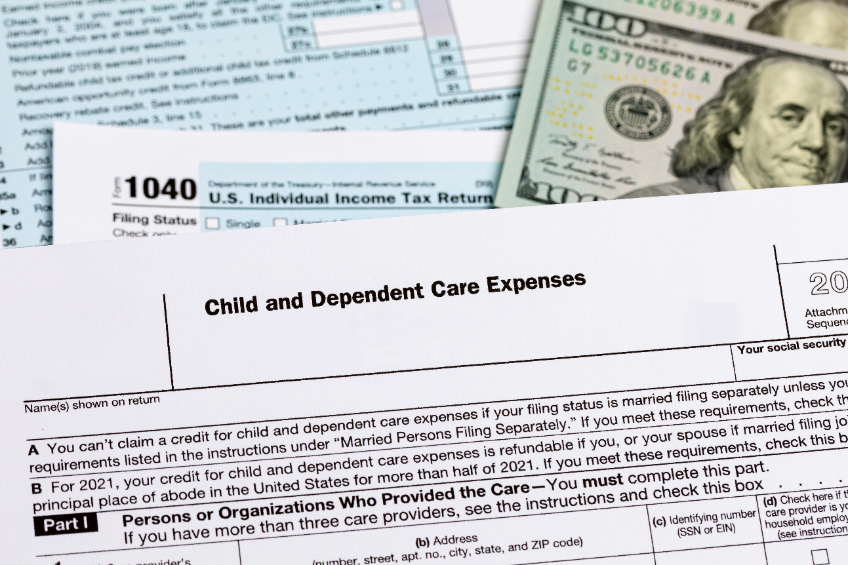Child and Dependent Care Tax Credit Offers Benefits and Care for Caregivers
Published:
The Child and Dependent Care Tax Credit is a beneficial tax credit provided by the US government to assist families who have dependents that require care while a parent or guardian completes work-related responsibilities. This credit serves as a tax saving tool for families since it reduces the total taxable income on their federal tax return, ultimately reducing their tax liability.
To qualify for the Child and Dependent Care Tax Credit, specific rules such as the type of care provider, eligible expenses, and income level need to be met.
Who Can Claim and Benefit from the Dependent Care Credit?
The Dependent Care Credit is a tax credit designed to provide tax savings to individuals who pay for the care of a qualifying individual to allow them to work or look for work. To benefit from this credit, certain criteria must be met.
Firstly, a qualifying individual must be present. A qualifying individual is someone who is either a child under the age of 13, an adult with a physical or mental inability for self-care, or a dependent who has lived with the taxpayer for more than half of the year and is not capable of supporting themselves. The care provider, who can be a daycare center, babysitter, or nanny, must also be identified.
The benefit amount for the Dependent Care Credit is based on the percentage of qualifying expenses spent on the care of the qualifying individual. However, the amount is also determined by the taxpayer’s income level. The higher the income, the lower the percentage of expenses that will qualify for the credit. Thus, it is essential to ensure that the correct qualifying individual is identified to maximize the tax credit’s benefit.
Notably, the credit is only available to those who are eligible to file a joint return. A married couple must file a joint return to qualify for the credit.
If one spouse is unable to work, they can still claim the credit as long as their spouse is working or looking for work. If they file their taxes separately, the credit will not be available.
How Does the Dependent Care Credit Work?
The Dependent Care Credit is a tax credit that offers tax savings to those who incurred expenses for the care of a dependent. This credit is available for qualifying individuals who have earned income and incur costs for childcare, enabling them to work and generate income.
To qualify for this credit, a taxpayer must have a qualifying individual, which includes a child under the age of 13, a spouse or dependent with a physical or mental disability requiring care, or any qualifying dependent who has lived with the taxpayer for more than half of the year. Additionally, taxpayers must demonstrate earned income for themselves or their spouse to qualify for the credit.
The expenses that can be claimed for this credit include payments made to a daycare center, babysitter, a qualifying relative who is not a dependent, or a nanny, among others. It is worth noting that the expenses incurred must be work-related. Otherwise, they cannot be claimed.
It’s calculated as a percentage of qualifying expenses, with a maximum limit based on the income level of the taxpayer. This percentage ranges from 20% to 35% of the qualifying expenses, with a maximum limit of up to $3,000 per qualifying individual. Married couples must file a joint tax return to take advantage of this credit.
For overnight camps, only the cost of the basic care can be claimed, while for day camps, the full cost of the care is eligible. Special rules apply to other types of care, such as school programs and summer camps.
It is necessary to distinguish between deductions and credits. Deductions decrease taxable income, whereas credits decrease the tax bill. As a result, tax credits are more beneficial than deductions, since they provide a larger reduction in tax responsibility.
Which Expenses Count as Child and Dependent Care Expenses?
Understanding eligible expenses is crucial in maximizing the tax savings offered by the dependent care credit. To be able to claim this credit, taxpayers must have incurred work-related expenses for the care of a qualifying individual with a social security number.
Covered Expenses for Dependents Under Age 13
This credit is especially beneficial to those who have dependents under the age of 13 that require care while they are at work. Covered expenses that qualify for the Child and Dependent Care Credit for dependents under the age of 13 include those incurred for care before or after school and during school breaks for non-school programs. This can include expenses related to daycare, after-school care, and any other care services that the dependent requires while the parent or guardian is at work.
When it comes to covered expenses for dependents under the age of 13, it’s important to understand that not all expenses will qualify for the Child and Dependent Care Credit. For example, expenses related to school programs and education do not qualify. However, expenses for before and after-school care, daycare services and other forms of care that the dependent requires while the parent or guardian is at work are covered.
To provide a more specific example, let’s say a parent drops their child off at a before-school program every day because they have to leave for work before school starts. The cost of this program is a covered expense that qualifies for the Child and Dependent Care Credit. Similarly, if a parent enrolls their child in an after-school program so that they can work late, the cost of that program is also a covered expense.
Qualified Expenses for Adults with Disabilities
Adults with disabilities who require full-time attention may also be considered as qualifying individuals for the Dependent Care Credit. In order to claim this credit, eligible expenses paid for their care while the caretaker is at work or seeking employment can be included.
Qualified expenses that may be claimed for adults with disabilities include those related to the cost of a personal aide, who provides them with the necessary care and assistance during the day. This may include expenses for a qualified caregiver who provides care in the home or at a care provider’s location.
Additionally, expenses related to transportation can also be included in the eligible expenses. This includes expenses incurred while transporting the individual with disabilities to a care provider’s location and back home.
Special Rules for Overnight Camps and Day Camps
When it comes to claiming the Child and Dependent Care Credit, there are special rules that apply to overnight camps and day camps. It is important to know the difference between qualified and non-qualified expenses in order to accurately calculate this credit.
Firstly, it’s important to understand that expenses related to overnight camps cannot be considered as qualified expenses for this credit. This means that if you paid for your child to attend an overnight camp during the summer, those expenses cannot be used to calculate this credit.
However, day camps are a different story. Only day camps that are related to care can be considered as qualified expenses. This means that if you paid for your child to attend a day camp that focused on care (e.g. a day camp for children with special needs), those expenses may qualify for this credit.
Here are a few examples to help differentiate between qualified and non-qualified expenses:
– If you paid for your child to attend a day camp that focused on care, those expenses may qualify for this credit. However, if you also paid for transportation to and from the camp, those transportation expenses are not qualified expenses.
– If you paid for your child to attend a day camp that focused on sports activities, those expenses are not eligible for this credit.
– If you paid for your child to attend an overnight camp, those expenses are not eligible for this credit.
Other Allowable Expenses
In addition to qualified expenses, there are other expenses that may still qualify for the Dependent Care Credit under certain circumstances. These expenses are known as allowable expenses and can provide additional tax benefits for families.
One example of allowable expenses are fees for school care, such as after-school programs or even summer day camps. While day camps focused on care can be considered qualified expenses, other summer day camps focused on sports or education may still qualify as allowable expenses. Similarly, expenses related to overnight camps may still qualify if the purpose of the camp is for the child’s care and not just for recreational purposes.
Another option for allowable expenses is hiring a caregiver to provide care for the dependent. This can include in-home caregivers, babysitters, or even adult daycare services. Additionally, expenses for a care flexible spending account (FSA) provided by an employer can also be included as allowable expenses.
Maximum Amount Allowed Per Child or Adult with Disability
The Dependent Care Credit is a tax credit that provides relief for individuals and families who pay for care for their dependents while they work or look for work. One key aspect of this credit is the maximum amount allowed per child or adult with a disability.
The maximum amount of expenses that can be used to calculate the Child and Dependent Care Credit is $3,000 for one individual or $6,000 for two or more individuals. This means that if you have one dependent, the most you can claim is $3,000 in expenses for that dependent. If you have two or more dependents, the maximum allowed is $6,000.
However, it’s important to note that this maximum amount is not the same as the actual credit amount that you may receive. The amount of your credit is limited to a percentage of your income, which means that the actual credit amount you can claim will vary depending on your income level.
For instance, if your income is low, you may be able to claim up to 35% of your qualifying expenses. On the other hand, if your income is higher, the percentage may be reduced to 20% or less. This means that even if you have a lot of qualifying expenses, your credit may still be limited by your income.



